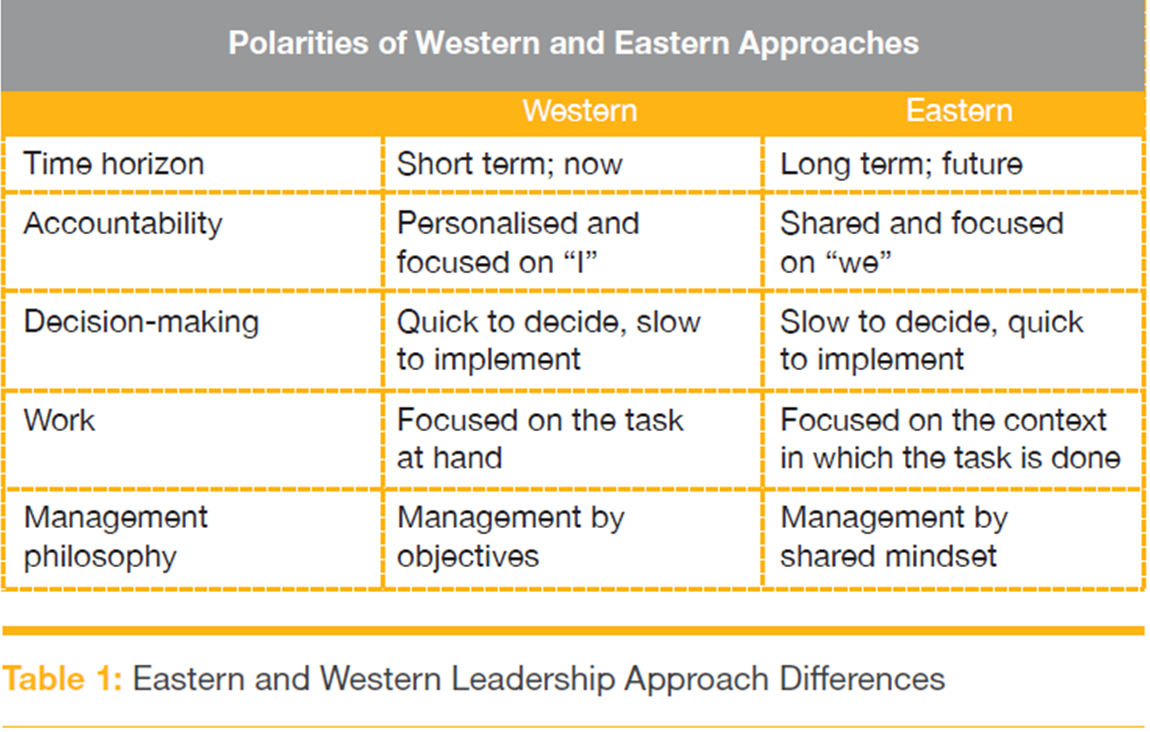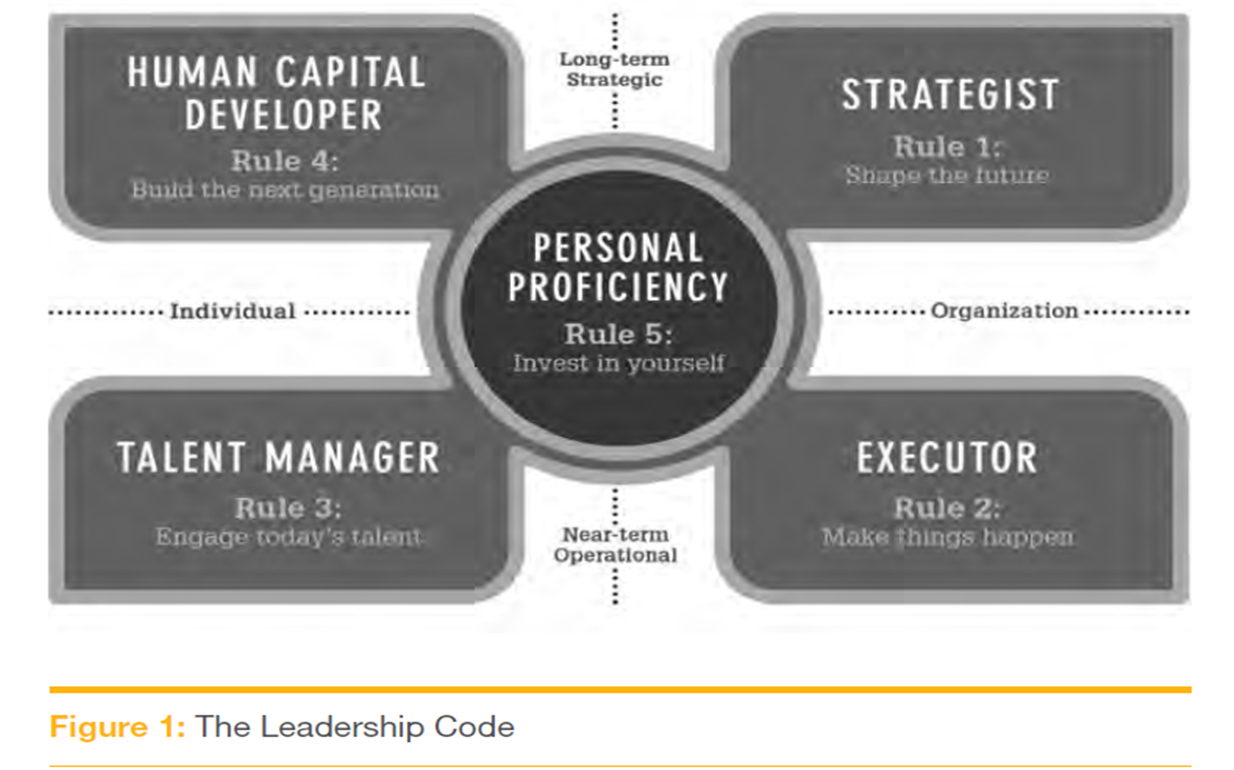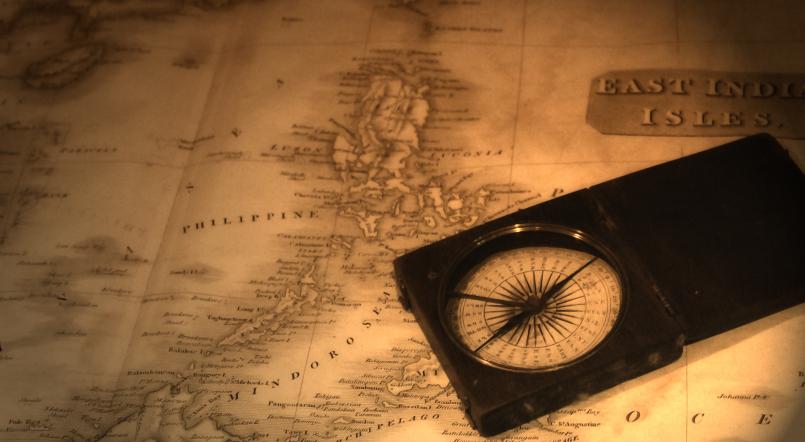While Asia is well-known for leading the recovery from the recent financial crisis, without the right leadership, organisations’ promises are unfulfilled, economic recoveries are short term and society’s hopes for improvement remain but optimistic ambitions.
What we know about effective leadership
Through our work we have ob-served contrasting styles between managing in the East and the West. Table 1 lays out some of these stylised polarities. The best global leaders in either the East or West however recognise strengths in the other perspective and bring those insights into their leadership actions. In our work on the ‘Leadership Code’, we have identified five es-sential roles of leadership. Leaders who know and act on these rules will tend to succeed; those who do not may have isolated successes, but over time they will not have leader-ship sustainability. These five roles are summarised in Figure 1.


We believe that all effective leaders need to address these five essential roles. In an increasingly globalised world, leaders from the East and West will need to better understand how these roles are manifested in their local context – so as to help them become more effective global leaders.
These paradoxical views get played out against each of the five responsibilities of leadership. Again, the challenge is to not be either totally “East” or totally “West”. The most effective leaders find a meld of the two in order to bring the best they can to both settings. Truly global leaders have the capacity to recognise both personal and cultural predispositions and learn to do what does not come naturally. In the increasingly small global village, effective leaders will learn how to combine the merits of both styles.
Rule 1: Shape the Future
Strategists answer the question: “Where are we going?” and make sure that those around them understand the direction as well. They not only envision, but also can create a future. They figure out where the organisation needs to go to succeed, they test these ideas pragmatically against current resources, and they work with others to figure out how to get from the present to the desired future. The rules for strategists are about creating, defining, and delivering principles of what can be.
Traditionally, Asian strategists have long-term outlooks, often over decades rather than years. Most Asian companies have, at their core, a strong set of valued principles that guide choices and shape futures. Becoming a truly global strategist requires an awareness of business conditions that affect an organisation and dealing with some of the questions in a manner that combines Eastern and Western approaches.
Truly global leaders have the capacity to recognise both personal and cultural predispositions and learn to do what does not come naturally.
Question: How do we anticipate future customer expectations and respond to them more quickly than competitors?
Asian leadership stereotypes emphasise the discipline of being rapid followers more than the ability to discover new ideas in the innovation process. This myth needs to be changed as Asian leaders need to recognise that innovation requires discovery, risk taking, and experimentation. Asian leaders who can grapple with the ambiguity of discovery will be more able to anticipate and respond to customer requirements.
Question: How do we manage the conections between government and industry as we grow our firm?
Many Western governments are seen to create barriers to business through regulations. However, many Asian countries have a balance of government and firm cooperation that enables focus and growth. Asian leaders must transfer these relationship skills to Western settings to help redefine the role of government in supporting while regulating business.
Question: How do we create a shared agenda on our direction and engage employees in personalising our corporate strategy?
The Eastern predisposition is to sublimate individual dissent in the quest for collective performance; the Western tradition is to use valuing differences as an excuse for independent action regardless of group cohesiveness. The best leaders learn to do both – by encouraging individual dissent within a larger collective vision.
Rule 2: Make Things Happen
The executor dimension of the leader focuses on the question: “How will we make sure we get to where we are going?” Executors translate strategy into action, make things happen, and put systems in place for others to emulate. Executors assign accountability, know which decisions to take and which to delegate, and make sure that teams work together. The rules for executors revolve around disciplines for getting things done and the technical expertise to get the right things done right.
Historically, Asian leaders are superb executors. The quality, six sigma, and lean movements are at the heart of successful Asian companies. Executors in Asia must also build organisations that are known for their agility, accountability, and decision making. They must deal with questions such as:
Question: How do we ensure accountability for results within the Asian culture of collaboration?
Accountability requires that an individual or team is clearly responsible for a task. Western organisations often set specific objectives that individuals or teams must accomplish. In many Asian organisations, collective responsibility occurs as teams collaborate to define and deliver goals. Pressure from peers often drives action more than targets. Global leaders must manage both the objectives and mindsets associated with accountability.
Question: How do we make decisions?
In traditional Western management, decisions are often made quickly and then implemented slowly, as a key individual makes the decision then has to enlist others to make it happen. In traditional Eastern management, extensive dialogue occurs among employees before the leader senses the consensus and formalises the decision, but then implementation occurs quickly. Global leaders are explicit about what decisions need to be made, who will make them, when they will be made, and how they will be made. At times this means Asian leaders need to be more explicit and public about the decision making protocols.
Rule 3: Engage Today's Talent
Leaders who optimise talent today answer the question: “Who goes with us on our business journey?” Talent managers identify what skills are required, draw talent to their organisations, engage them, communicate extensively, and ensure that employees turn in their best efforts. Talent managers generate intense personal, professional and organisational loyalty. The rules for talent managers center around resolutions that help people develop themselves for the good of the organisation.
Traditionally Asian leaders invest heavily in long term talent development by nurturing and developing current employees who are promoted from within to meet future organisational needs. Talent managers in the Asian context help communicate and motivate current talent. In the Asian context, some unique questions include:
Question: How do we engage today’s employees to continue to give discretionary energy to work while managing increased interest in work/life balance?
One Eastern firm lamented Western employees’ unwillingness to sacrifice personal life for work. Employee dedication is often measured by hours and willingness to give oneself fully to their organisation. Global leaders must be ambitious and hard working, but they also need to be sensitive to the personal expectations of employees.
Question: How do we help employees find meaning in the work that they do?
Many employees put in their time at work, but not their hearts and souls. Global leaders are meaning-makers who help employees find a sense of meaning and purpose from the work that they do. This meaning comes when employees see how their work fills a broader societal need, when employees do work that is energising for them, and when employees learn and grow from their work.
Rule 4: Build the Next Generation
Leaders who are human capital developers answer the question: “Who stays and sustains the organisation for the next generation?” They seek to ensure that the organisation has the competencies required for future success. They build a workforce plan focused on future talent. They understand how to develop, and help employees see their future careers within the company. These leaders ensure that the organisation will outlive any single individual and install rules that demonstrate a pledge to building the next generation of talent.
Our research shows that the human capital developer skill set is generally the lowest of all leadership roles. Leaders seem more prone to defining and executing strategy, and managing today’s talent than developing future generations. However, we also have found that in general, Asian leaders score higher than Western leaders on human capital development. For Asian leaders to become truly global, they need to invest in the next generation by responding to such questions as:
Question: How do we source the employees in the future who will be fit for service?
Sourcing new talent requires an assessment of future business requirements before increasing the pool of potential candidates who might bring these competencies. Global leaders employ a host of sourcing activities, including referral hiring, social media hiring, targeting schools and other talent sources, and behavioural interviewing. Asian leaders need to continually expand their global networks to attract future employees who have skills for the future.
Question: How do we prepare our more local Asian employees to be successful in the global context?
In preparing local employees for global success, Asian leaders must gain experience in Western companies. In our research, we identified many Westerners who ran large Asian MNC operations, but few Asians who ran large operations in Western MNCs. To prepare themselves for future obligations, leaders must learn to adapt to other cultures.
Rule 5: Invest in Yourself
At the heart of the ‘Leadership Code’ is personal proficiency. Leaders are learners: from successes, failures, assignments, books, classes, people, and life itself. Effective leaders inspire loyalty and goodwill in others because they themselves act with integrity and trust. Decisive and impassioned, they are capable of bold and courageous moves. Confident in their ability to deal with situations as they arise, they can tolerate ambiguity. Proficient leaders act out of a strong moral code that connects values to actions.
Question: How can we ensure that we are personally proficient?
Asian and Western leaders need to be personally proficient by taking care of themselves on a number of dimensions:
- Physical: taking care of their bodies so that they are fit for service;
- Emotional: managing their identity, energy, and passion so that they have resilience and stability;
- Social: ensuring both tight and loose ties with colleagues at work and friends outside of work so that they have a strong support network;
- Intellectual: having learning agility so that they can adapt to new circumstances;
- Spiritual: maintaining a strong sense of values so that they act with clear conscience and within the bounds of the societal moral code.
Conclusion
Cultural differences between Western and Eastern leadership exist. These leadership traditions are rooted in history, experience and practices. However, as the world shrinks, there are some common principles that global leaders must master. Leaders who learn how to combine the East and the West as they shape the future, make change happen, develop talent, nurture future human capital, and take care of themselves become truly global leaders. In the future, when we are asked to name a successful leader, they will not be thought of as Eastern or Western, but a combination of the two.


